Use your breath
You need to properly clean the diamond. Then all you have to do is fog the stone with your breath. It’s the same way you fog a mirror, just breathe on the diamond.
Real: Stones that don’t easily fog are probably real. True diamonds easily disperse heat.
Fake: Fake stones take longer for heat to disperse. Fog remaining on the stone for a few seconds after breathing on it is often an indication the diamond is fake.
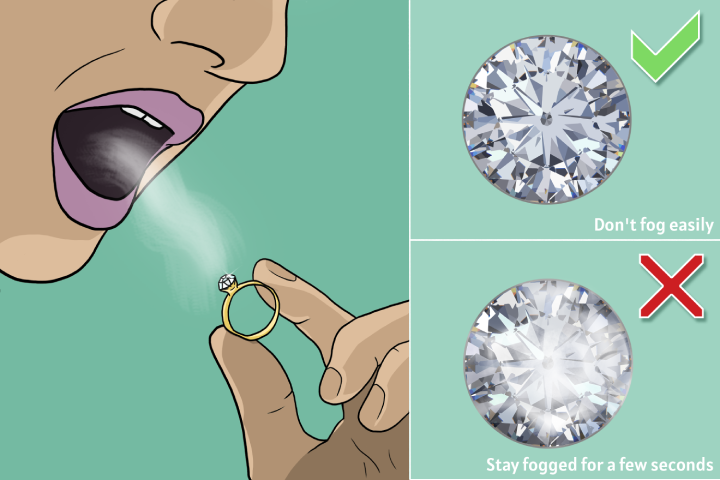
Look at the stone’s setting
If the diamond has been placed on the ring, you can have a look what the type of mount and setting has been used.
Real: Very few real diamonds are in cheap metal settings. Diamonds are so precious and valuable that they are always set in materials such as gold and platinum. Gold and platinum bands are marked for identification. For example, 10K, 14K, 18K, or markings like 585, 750, 900, 950, PT, and Plat.
Fake: When the band is unstamped, or marked with TK316, Ag, 925, KP, GP, GF, GEP, KGF, or KF, it’s another indication of a fake stone.
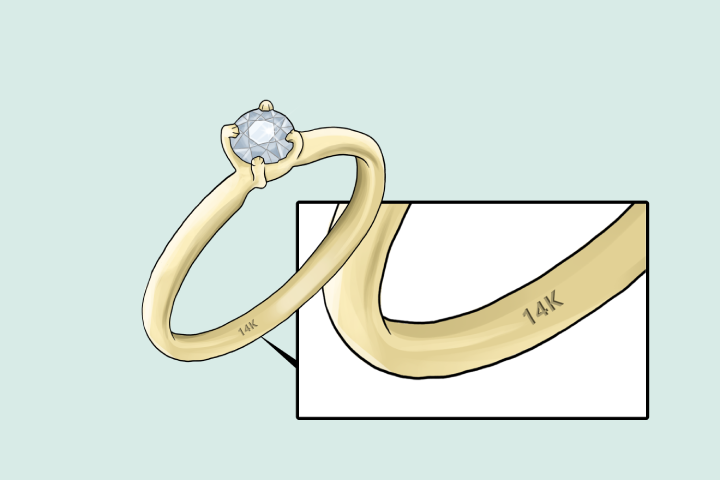
Use a jeweler’s loupe for magnification
Look at the edges of the gemstone where the facets meet.
Real: Real diamonds often have sharp, crisp edges.
Fake: If they are rounded or highly abraded, it’s certainly not a diamond.
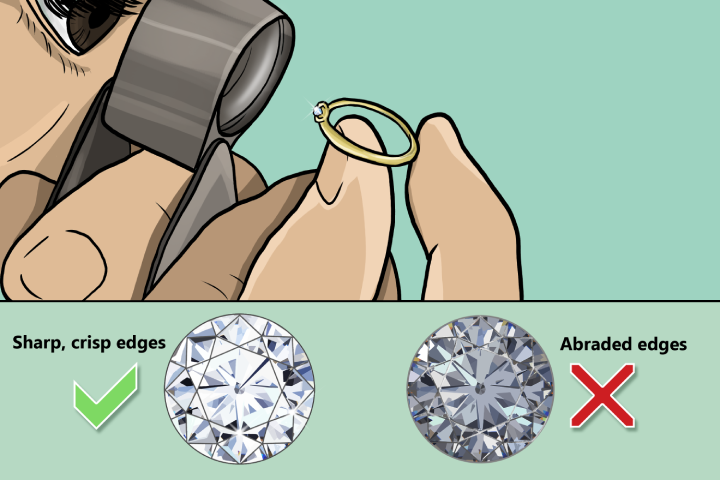
Perform an oil affinity test
After cleaning the stone with a gentle degreasing solution (such as water with a few drops of mild dish soap), try to mark the diamond with an oil pen.
Real: If the pen leaves clear and continuous lines on the stone, it’s an indication it’s a real diamond.
Fake: When only dots or faint, discontinuous lines appear, it might be fake.
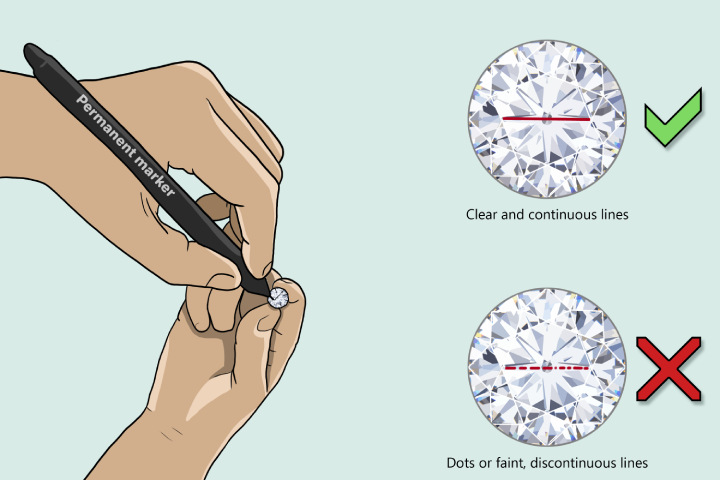
Perform a reading test
Flip the loose round diamond upside down and place it on printed paper.
Real: When the print is illegible through the stone, it’s probably a real diamond. However, there are a few exceptions: if its cut is disproportionate, the print can still be visible through a real diamond.
Fake: Try to read print through the stone. When the print is visible, it probably isn’t a real diamond.
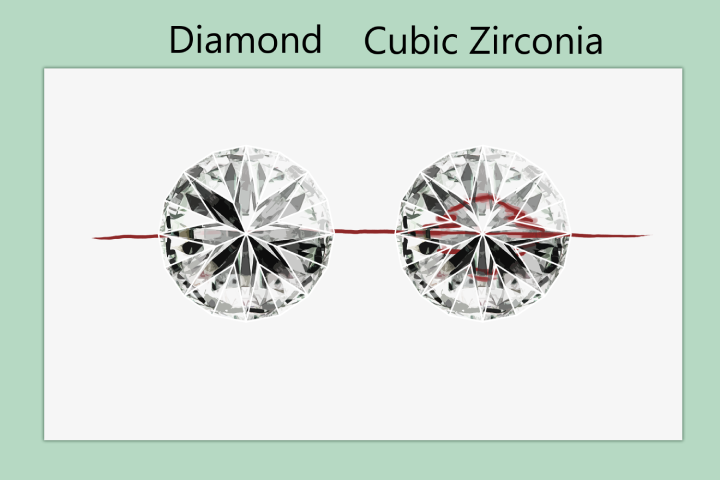
Use a lighter
You will need a lighter and a glass of cold water. Then you better wear fireproof gloves for safety. Heat the stone for around 30 seconds and drop it in the glass.
Real: Real diamonds can withstand the shock of both heat and cold and will not shatter.
Fake: Heating fake stones and dropping them in cold water can cause them to shatter. Diamonds that shatter are false.
Warning: This step is dangerous and not recommended. If it is not a real one, it will likely be destroyed.
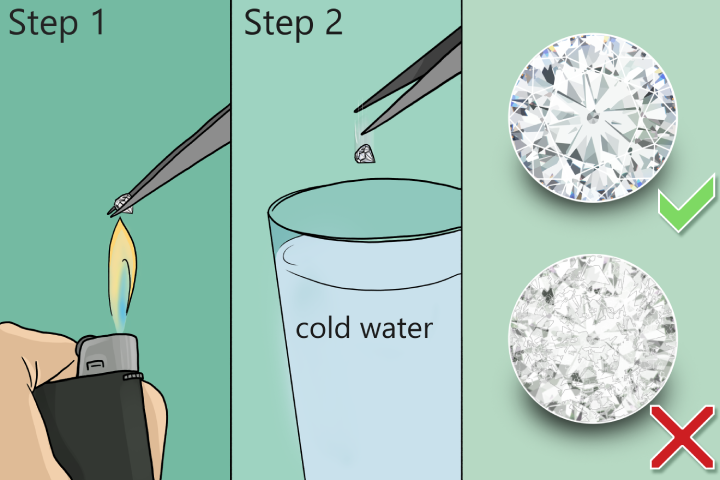
Ask for a heat probe test
A heat probe test is typically free, at most respected jewelers. The jeweler measures how long the stone retains the heat. It prevents fake diamonds from shattering, so you can still use the stone.
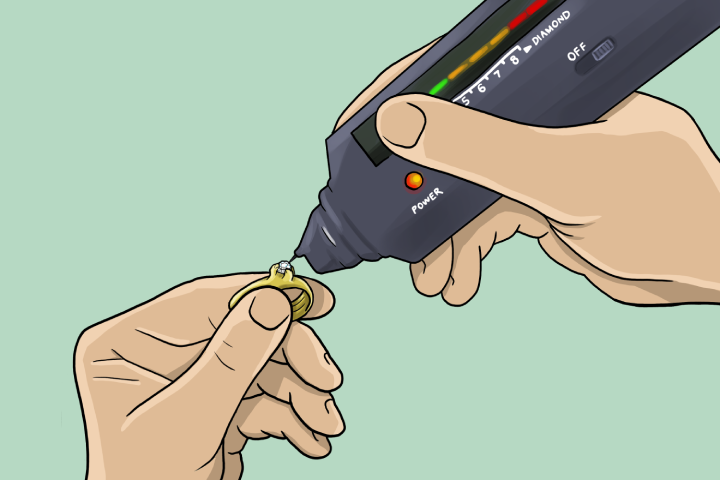
Tips:
- It is a good idea to use multiple methods to determine the authenticity of a diamond, as no single test is foolproof.
- If you are unsure about the authenticity of a diamond, it is always best to seek the evaluation of a professional.